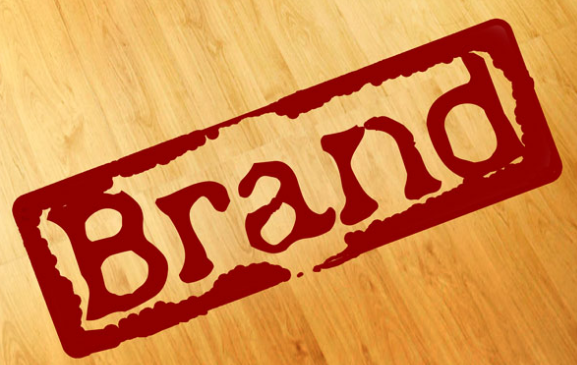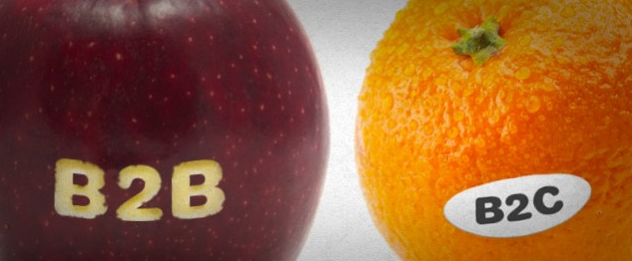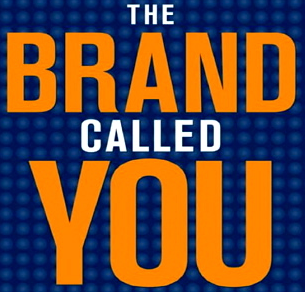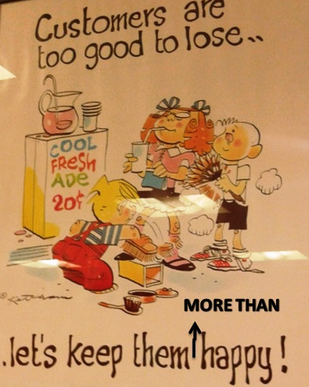Last week I had the opportunity to attend a TiE Mumbai branding workshop – not those theoretical 4Ps of marketing type session but one where practical examples were shared and one where a room full of entrepreneurs or ‘Rodinhooders’ as we call them learnt the importance of branding.
Here are 7 brand ‘Buddhisms’ that will change the way you thought about branding and help you create a unique story for your organisation.
1. Branding first. Product second
This can be hard to digest for all of us who constantly feel that we must keep improving the product, changing the service, tweaking the user experience etc. However, in this never ending saga of ‘agile development’ as its now called, entrepreneurs think that they can accomplish branding later – once the product is set, once we have a few customers and more importantly once when we have the money to make some noise via advertising.
Well, you are wrong! Branding is about perception – it’s a mind game you must play in parallel to developing your product. Because, people buy brands, they don’t buy products.
2. Brands are living breathing creatures
The product is not your brand. The brand lives in the mind of the consumer and in the same way that your customer develops over time, so should your brand. It is a living-breathing creature that must be nurtured at every step of your growth.
Think about the evolution of Thums Up – first they had Sunny Deol racing through the dust clouds drinking Thums Up on a horse, then they had Akshay Kumar skydiving because the brand became less filmy and more adventure. As the Thums Up drinker became more educated and sophisticated the brand has continued to change its story to relate to its audience. Be fresh. Be relevant.
3. Don’t get lost in B2B, B2C and other terms
But, I am a B2B customer what branding should I do? I don’t sell something easy like Coke or Pepsi – my product is more complex. If you have ever thought of these excuses to not think about branding then change now. Ultimately, these are terms coined by marketers to segment marketing messages not to segment when branding should happen and when it shouldn’t. Every organisation is a brand, an entity in itself. And whoever consumes your brand is your consumer. It’s that simple. The way you communicate may change but the fact that you have to undertake branding doesn’t.
4. You are part of the brand
Say you were a pharma salesman visiting a doctor to showcase your newest product. Would the doctor buy if you looked dirty, unkempt and like you didn’t know your product? Probably not. Would he entertain you if you looked like that but the pharma company had spent millions on a TV ad. Maybe but he’d have reservations. That’s because people buy brands, not products. And, as an entrepreneur you are the brand. So are your employees. The way you communicate, interact with consumers, work with your team – it’s all a part of your unique DNA that makes your organisation stand out.
5. People buy benefits not products
You are not in the business of selling a game or selling cards or selling food. You are in the business of creating entertainment when one is bored, of communicating one’s feelings, of being a place where people meet and connect. If Starbucks had ever said they were a place to buy great coffee, it wouldn’t be the success it is today. Instead, they said they are the 3rd place you can meet people (with the first two being your home and office).
Secondly, don’t think about all the features your product has and about communicating them all on your site. Rather, focus on what benefits the customer will have. Focus even more on what the customer stands to lose if they don’t use your brand and see the change that happens – Intuit talks about ‘Never losing a sale’ rather than ‘a great machine you can plug on to your iphone to take credit card payments which accepts nine different cards and is available in 15 different countries’ – you tuned out of the last sentence didn’t you? So, how are your customers any different?
6. Positioning is not branding.
While branding is about creating a perception, a story about your organisation, positioning is about how consumers perceive your brand. It’s about finding a comparative category of products that your consumers can relate to and then becoming a defining part of that category. If I tell you to think about butter, what’s the first one that comes to mind? Amul right?
Another great example is Moov. When Moov was introduced it had almost the same benefits as the then popular Iodex – it could be used for sprains except that it was white and didn’t stain your clothes. However, Moov decided to not compete with Iodex and instead positioned itself as a back-pain specialist (also because you need a lot of Moov for your back as it is a big area = more sales). By doing so, Moov created a new category for itself and at the same time relegated Iodex to just being for other sprains. The result? We still have Iodex in our homes but we only use Moov for back pains. Amazed?
7. Don’t talk. Listen.
Today, there are more ways of talking to your customers than ever before. However, the irony is that it has become harder to connect with consumers. As an entrepreneur rather than talking down via advertising etc, you must listen up. Have dialogues with your customers through social media like the UP police are doing, empower your users to come to you by consistently being available and listen so that you can learn about your customers hopes, fears, needs and wants – in the same way that the kirana wala uncle knows your favourite chocolate and gives it to you without asking.
_____
Deep down these Buddhisms are probably something we are all aware of – after all we are consumers too. However, for some reason when it comes to talking about our organisation, we put all our intuitions as a customer aside and do the wrong things. Hope this helps you re-assesss your strategies the same way the TiE Branding workshop helped me re-assess my strategies.












asha chaudhry
perzen… i will keep it short.
you were born to create content!
pls don’t stop writing even after you start up! you must keep at it…!!! not many people are gifted to make writing & networking their profession…
really wow summary of an event! am so glad you could take away so much from it and share it with us.
now i’d like to re-read your post, if i may!
🙂
Perzen Darukhanawalla
Wow – thanks so much for the kind words Asha. And for your constant motivation 🙂
Aman Jha
Hi Perzen,
I agree and disagree with you at the same time.
1) This post I believe is more oriented towards established companies rather than Startups, because when you talk about Startup very first thing comes to mind is they are bootstrapped.
2) A good product may help you at least sustain if not make you millionaire but a good brand image without a good product will only earn you millions for few years but you cannot sustain growth. Eg: Bata – Good Brand image, but now loosing customers, Nokia is the best example, had a great brand value but paused product development and lost market share. Micromax has got great product, it’s capturing market share.
3) How important branding is depends upon the demand elasticity, you need branding more than developing a good product only when you are a me2 product/service or you are not much needed in the market.
4) Remember, Speed Petrol, they were the only one’s who tried to create a brand image, though their product has inelastic demand they failed utterly.
Please take note, I am not against branding but no amount of branding and marketing can help you sustain with a bad product. Also, I am putting this up with point of view of a Startup. Most of the Startups have got only one choice, i.e. To target a pain point, develop a brilliant product, sustain for sometime, use all kinds of free resources for branding and then finally when VCs come in they can actually put in money for branding. Anyway, VCs at times putting in money is in itself a branding activity.
I agree with rest all the points you have mentioned w.r.t Branding.
And you write really well.
Regards,
Aman A Jha
Perzen Darukhanawalla
Hi Aman,
Thanks for your comments. Just to quickly sum up based on your points:
1. This post is actually targeted towards startups to really highlight the importance of branding and on what can be achieved when its done right. Moov was started by an entrepreneur just like us for example. We confuse the process of branding with advertising, marketing, creating a facebook page and spending money and hence we feel it can’t be done while we are bootstrapped as we don’t have money. However, like I said, branding is all in the mind and it’s about the story you tell (often the best ones are told without spending any money).
2. There is no discounting that a good product is at the core of the business. What my post means to highlight is that branding your organisation cannot be left behind at the cost of building a great product because if you don’t tell anyone your story, no one will know that you exist. The examples you bring up are perfect – Bata is not loosing customers, it’s created a niche for itself for ‘comfortable’ shoes and has so ingrained itself into the Indian culture that parents across India think of Bata when they think of comfortable school shoes for their kids. Micromax has a great product but it’s only because they did branding in parallel are they now succeeding
Thanks for reading and sharing your view-points 🙂
kanchan.kumar
Thank you Perzen for a superb summary. I wish more startups understand the value of brand.
kanchan.kumar
Aman – you are not alone in thinking this way, I, for a long time thought the same way 🙂
your view is the exact reason why this workshop was organised in the first place.
– Obviously you can’t sell a plain coloured water in thumps up bottle. But in today’s day & age, a product is a given. It’s a basic hygiene now. But the best of the products don’t sell on their own. They have to marketed and sold. Brands help you do that.
– Micromax isn’t a product success story, it’s a brand success story. Think about it, the Chinese mobile phones were always available – even before Micromax came on board.
– However unique product you have, it’s unique only till you launch, post that there are several me2 products – given that the entry barrier so low today. So don’t make a mistake that if you have a unique product, you don’t need branding. And there is nothing ‘really’ called first mover’s advantage in today’s market.
– Branding doesn’t cost huge amount of money, all it needs is substantial mindshare of the founders. Don’t confuse brand with advertising or other forms of communication. Dropbox communicated their brand with one video on their website.
– Branding is for everyone – not just for established companies. Look around and see successful startups, they are successful because of the brand (ofcourse they have a good product).
Perzen Darukhanawalla
thanks for the opportunity 🙂 it was quite the valuable session
Aman Jha
Hi Kanchan,
I completely agree branding is essential for startups too, my comments were with the view that Branding costs heavy amount. So as you said, if branding is possible spending less amount then, even I agree that branding should be done parallel to product development.
A lot of startups like me believe branding costs a lot, may be this is the reason why startups don’t give priority to branding. I would like to meet you in person when ever possible to understand the methods of easy and affordable branding.
Regards
Pawan Naulakha
Branding creates a perception, a image and builds up the trust in your mind, for sure.
Wonder how many of us know that NIKE till date do not manufacture any of their shoes. But still when we go for shopping and have two products in our hands which look alike and have the same features we still go for NIKE, even though it may be much highly priced than the other one. The perception is BRAND, QUALITY, ASSURANCE which NIKE has built over the time being.
This being just an eg. many many more highly esteemed companies do not have their in-house manufacturing plant for most of their products, but the mind still tempt us to buy those products. The reason is as Perzen clearly highlighted above is BRANDING..!!!
But what shook my mind was those words you highlighted B2B and B2C concept of branding. I still wonder how does one create a niche market branding policy for a B2B firm..!! I still wonder..!!!
Perzen Darukhanawalla
Hi Pawan,
Thanks for your example on Branding. We also talked about Nike at the workshop and it may interest you to know that despite Nike having a wide product range, it is still most closely identified with shoes. On the contrary, an Adidas or a Reebok is more about Sport – would be keen to hear your thoughts.
To answer your question around B2B branding, the best example I could give you is Hubspot– they do a lot of content marketing and while their product is marketing automation systems, they have branded themselves as an organisation which is a thought leader in Inbound & Content Marketing – they have created an identity for themselves and through the content they produce each week have carved a niche for themselves.
Sunaina Shenoy
Hi Perzen,
Very well written 🙂
Concise & to the point..
Well, I would like your thoughts & all you fellow Rodinhooders views on the statement – “People don’t have relationship with products; they are loyal to brands”. Do you connect with this?
Pawan Naulakha
That was a quicker.
But I would differ slightly:
Adidas positioning celebrities like Sir. Tendulkar for its sports accessories and sizzling Bipasha for its running shoes category gave the brand a wholesome presence in the sports category. Reebok with their ZIG-ZAG branded shoe portfolio did try to catch the eye of the customers in their shoes segment, while NIKE focused on capturing the overall sports supplier image in India. With the logo firmly positioned on the Jersey of every Indian cricketer and the bold BLEED BLUE symbol emblazoned on the blade of every performing Indian batsmen it somehow showed that it had many things to offer rather than just shoes. Moreover unlike REEBOK and ADIDAS stores the NIKE stores have a much smaller space for its shoe segment. That seriously speaks about its brand positioning.
Still very unsure about the reach and conversion rate of inbound marketing in todays scenario, with the fear of getting black-listed due to excessive mailing system and the freedom of reporting spam this methodology had seriously taken a back foot. Content though always remains the king across all segment, I am yet to select the exact and correct medium.
Yes Hub-spot offers a lot of free training tools and marketing fundas for leveraging your brand and online positioning of your products, but somehow it fails to catch my attention. I need to rethink for sure 🙂 .
Pawan Naulakha
LIKE (Y)
Oops asha chaudhry we need the LIKE button as well to like the comments plz.!!
asha chaudhry
dude – NING doesn’t have a LIKE or UPVOTE feature i’m afraid…. 🙁
till then, pls keep typing LIKE!
Vikram Parekh
That’s helpful. Thanks for sharing.
kanchan.kumar
If someone still thinks building a great product is end in itself, here’s small post
https://andrewdumont.me/build-it-but-they-wont-come
Perzen Darukhanawalla
Thanks Rahul for the kind words and yes I did read your legal issues article – was very informative!
Perzen Darukhanawalla
Hi Sunaina,
Thanks for the kind words and am glad that you connected with the article. In regards to your statement, I totally agree that the relationship lies with the brand and not the product. Why else would soft baby care pop up in my mind every time I thought of J&J or would startups pop into my mind when thinking of Your Story. The relationship is fostered by all the kinds of marketing activities you do I feel and goes beyond the product.
Perzen Darukhanawalla
Hi Vikram,
Thanks so much and glad to know it was useful!
Perzen Darukhanawalla
Think this describes it perfectly!